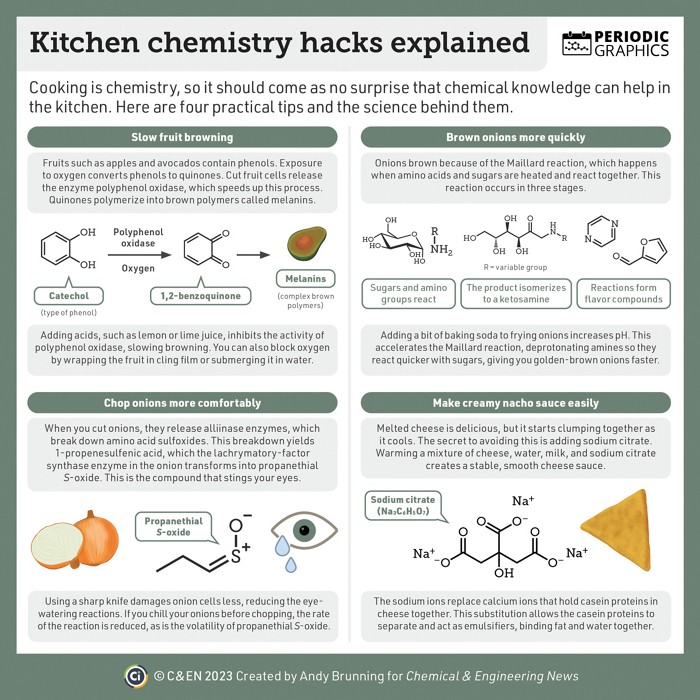Advertisement
Grab your lab coat. Let's get started
Welcome!
Welcome!
Create an account below to get 6 C&EN articles per month, receive newsletters and more - all free.
It seems this is your first time logging in online. Please enter the following information to continue.
As an ACS member you automatically get access to this site. All we need is few more details to create your reading experience.
Not you? Sign in with a different account.
Not you? Sign in with a different account.
ERROR 1
ERROR 1
ERROR 2
ERROR 2
ERROR 2
ERROR 2
ERROR 2
Password and Confirm password must match.
If you have an ACS member number, please enter it here so we can link this account to your membership. (optional)
ERROR 2
ACS values your privacy. By submitting your information, you are gaining access to C&EN and subscribing to our weekly newsletter. We use the information you provide to make your reading experience better, and we will never sell your data to third party members.
Food Science
Periodic Graphics
Periodic Graphics: Kitchen chemistry hacks explained
Chemical educator and Compound Interest blogger Andy Brunning reveals the chemical recipes behind common kitchen shortcuts.
by Andy Brunning, special to C&EN
August 20, 2023
| A version of this story appeared in
Volume 101, Issue 27

To download a pdf of this article, visit cenm.ag/kitchenhacks.
References used to create this graphic:
Ames, Jennifer M. “The Maillard Reaction.” In Biochemistry of Food Proteins, edited by B. J. F. Hudson, 99–153. Boston, MA: Springer US, 1992.
Ioannou, Irina, and Mohamed Ghoul. “Prevention of Enzymatic Browning in Fruit and Vegetables.” Eur. Sci. J. 9, no. 30 (2013).
Yoon, Ashton. “Why Do Onions Make Us Cry?” Science and Food. June 6, 2017.
A collaboration between C&EN and Andy Brunning, author of the popular graphics blog Compound Interest
To see more of Brunning’s work, go to compoundchem.com. To see all of C&EN’s Periodic Graphics, visit cenm.ag/periodicgraphics.





Join the conversation
Contact the reporter
Submit a Letter to the Editor for publication
Engage with us on Twitter